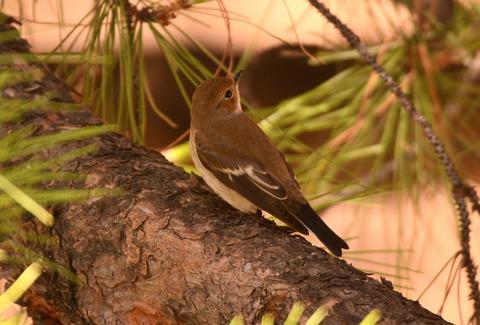Functional Ecology ( IF 5.2 ) Pub Date : 2022-09-06 , DOI: 10.1111/1365-2435.14176 Ismael Galván 1

|
1 INTRODUCTION
Sexually selected traits often act as signals because of their ability to influence decisions of the recipients and thus affect their fitness (Hasson, 1997). Such fitness consequences are usually positive, leading to signal honesty (Searcy & Nowicki, 2005). Understanding why signals' recipients increase their fitness by perceiving the signals, which equals understanding the evolution of signals and honesty, can be achieved only through a comprehension of the mechanisms underlying signal production (i.e. the “black box”) (Dale, 2006). Production mechanisms may thus determine the precise information that recipients obtain when perceiving signalers, hence disentangling trait evolution.
Being the most common pigments in vertebrates, melanins confer an extraordinary richness of colours and patterns to different parts of the body of animals, consequently enabling the evolution of visual signals. This is particularly relevant in birds, in which diverse melanin-based plumage colours transfer information related to the processes underlying the chemistry of melanin synthesis in melanocytes (Galván & Solano, 2016). This chemical information has a high potential for the evolution of signal honesty, but is still not well understood (Guindre-Parker & Love, 2014). This limitation is in part given by the structural complexity of melanins, which are large insoluble polymers that make difficult their isolation from feathers and the direct analysis of their chemical diversity (Galván & Solano, 2016).
Recent advances in the application of noninvasive techniques such as Raman spectroscopy in the study of melanins open new opportunities to understand the signalling function of melanin-based plumage colouration. This is the case of eumelanin, the melanin form that gives rise to black, grey and brown plumage traits and that is composed by two monomers: 5,6-dihydroxyindole (DHI) and 5,6-dihydroxyindole-2-carboxylic acid (DHICA) (Galván & Wakamatsu, 2016). Up to now, the adaptive functions, including signalling, and evolution of eumelanin-based colours in birds and other animals have been investigated considering eumelanin as a whole (e.g. Caro & Mallarino, 2020; Eliason et al., 2019). However, the capacity of Raman spectroscopy for a direct determination of the monomeric composition of eumelanin in feathers and other integumentary structures without the need of destroying or invasively treating the samples has recently been demonstrated (Galván et al., 2018), which facilitates a more detailed study of eumelanin-based colours in animals.
The pied flycatcher Ficedula hypoleuca is a small passerine bird whose dorsal plumage is coloured by eumelanin, which pigments black and brown-grey feathers. The black:grey feather proportion is responsible for dorsal plumage colour variability in male pied flycatchers, which ranges from mostly brown-grey (grey hereafter) to almost fully black (Figure 1). This dorsal eumelanin-based colouration is a sexually selected trait, with blacker males achieving higher mating success than greyer males in at least some populations (Dale et al., 1999; Galván & Moreno, 2009) and affecting the attractiveness of other plumage traits in other populations (Sirkiä & Laaksonen, 2009), thus suggesting that it has evolved as an honest signal of quality. However, the signalling function of this trait, that is why females preferentially mate with blacker male pied flycatchers, is unknown. In fact, associations between dorsal plumage blackness and systemic markers of oxidative stress and damage have been shown to be absent (López-Arrabé et al., 2014; Moreno et al., 2011) or dependent on environmental factors such as temperature (Teerikorpi et al., 2019), which makes their interpretation difficult.

Given that eumelanins composed of different proportions of DHI and DHICA give rise to different colours (black, grey and brown) in the feathers and hairs of different species of birds and mammals (Galván & Wakamatsu, 2016), the monomeric composition of eumelanin may also explain dorsal colour variability among male pied flycatchers. Such chemical explanation of intraspecific colour variation would provide insight into the signalling function of the trait, as the synthesis of DHI and DHICA differ in implications for oxidative stress and damage (Galván & Solano, 2015). Here, I use Raman spectroscopy to determine the eumelanin monomeric composition of dorsal feathers in male pied flycatchers and test its capacity to explain intraspecific plumage colour variation. The abovementioned ubiquitousness of melanin pigments in vertebrates makes that the implications of such association extend far beyond the specific case of the pied flycatcher, as the structure of eumelanin is the same in all organisms and its monomeric composition may thus have the potential to explain the life-history nexus of most existing pigmentation phenotypes.
中文翻译:

颜料分子组成揭示了视觉交流的重要信息
1 简介
性选择特征经常充当信号,因为它们能够影响接受者的决定,从而影响他们的健康(Hasson, 1997)。这种健康结果通常是积极的,导致信号诚实(Searcy & Nowicki, 2005)。理解为什么信号的接收者通过感知信号来增加他们的适应度,这等于理解信号的演变和诚实,只有通过理解信号产生的机制(即“黑匣子”)才能实现(Dale, 2006)。因此,生产机制可以确定接收者在感知信号时获得的精确信息,从而解开性状进化。
作为脊椎动物中最常见的色素,黑色素赋予动物身体不同部位异常丰富的颜色和图案,从而促进视觉信号的进化。这在鸟类中尤其重要,其中基于黑色素的多种羽毛颜色传递与黑色素细胞中黑色素合成化学过程相关的信息(Galván & Solano, 2016 年)。这种化学信息对于信号诚实的进化具有很高的潜力,但仍然没有被很好地理解(Guindre-Parker & Love, 2014)。这种限制部分是由于黑色素的结构复杂性造成的,黑色素是大的不溶性聚合物,难以从羽毛中分离出来,也难以直接分析它们的化学多样性(Galván & Solano, 2016 年)。
拉曼光谱等非侵入性技术在黑色素研究中的应用的最新进展为了解基于黑色素的羽毛着色的信号传导功能开辟了新的机会。真黑色素就是这种情况,这种黑色素会产生黑色、灰色和棕色的羽毛特征,由两种单体组成:5,6-二羟基吲哚 (DHI) 和 5,6-二羟基吲哚-2-羧酸 (DHICA) )(Galván 和 Wakamatsu, 2016 年)。到目前为止,已经研究了鸟类和其他动物中基于真黑色素的颜色的适应功能,包括信号传导和进化(例如 Caro & Mallarino, 2020 ; Eliason et al., 2019)。然而,拉曼光谱在无需破坏或侵入性处理样品的情况下直接测定羽毛和其他皮肤结构中真黑素单体组成的能力最近得到证实(Galván 等人, 2018 年),这有助于更动物中基于真黑色素的颜色的详细研究。
斑点捕蝇器Ficedula hypoleuca是一种小型雀形目鸟类,其背部羽毛被真黑色素着色,黑色和棕灰色羽毛着色。黑色:灰色羽毛的比例是造成雄性花斑捕蝇器背部羽毛颜色变化的原因,其范围从大部分棕灰色(以下为灰色)到几乎全黑(图 1)。这种基于真黑色素的背部颜色是一种性选择特征,至少在某些种群中,较黑的雄性比灰色的雄性获得更高的交配成功率(Dale 等, 1999;Galván & Moreno, 2009),并影响其他羽毛特征的吸引力。其他人群(Sirkiä 和 Laaksonen, 2009),因此表明它已经演变为一种诚实的质量信号。然而,这一性状的信号功能,这就是为什么雌性优先与更黑的雄性捕蝇器交配的原因尚不清楚。事实上,背羽黑度与氧化应激和损伤的系统标志物之间的关联已被证明不存在(López-Arrabé 等人, 2014 年;Moreno 等人, 2011 年)或取决于温度等环境因素(Teerikorpi 等人) al., 2019 ),这使得他们的解释变得困难。

鉴于由不同比例的 DHI 和 DHICA 组成的真黑色素在不同种类的鸟类和哺乳动物的羽毛和毛发中产生不同的颜色(黑色、灰色和棕色)(Galván 和 Wakamatsu, 2016 年),真黑色素的单体组成也可能解释雄性花斑捕蝇器的背部颜色变化。这种对种内颜色变化的化学解释将提供对该性状信号功能的深入了解,因为 DHI 和 DHICA 的合成对氧化应激和损伤的影响不同(Galván & Solano, 2015)。在这里,我使用拉曼光谱来确定雄性花斑捕蝇器背部羽毛的真黑色素单体组成,并测试其解释种内羽毛颜色变化的能力。上述在脊椎动物中普遍存在的黑色素色素使得这种关联的含义远远超出了捕蝇器的具体情况,因为真黑色素的结构在所有生物中都是相同的,因此其单体组成可能具有解释生命的潜力- 大多数现有色素沉着表型的历史联系。



























 京公网安备 11010802027423号
京公网安备 11010802027423号